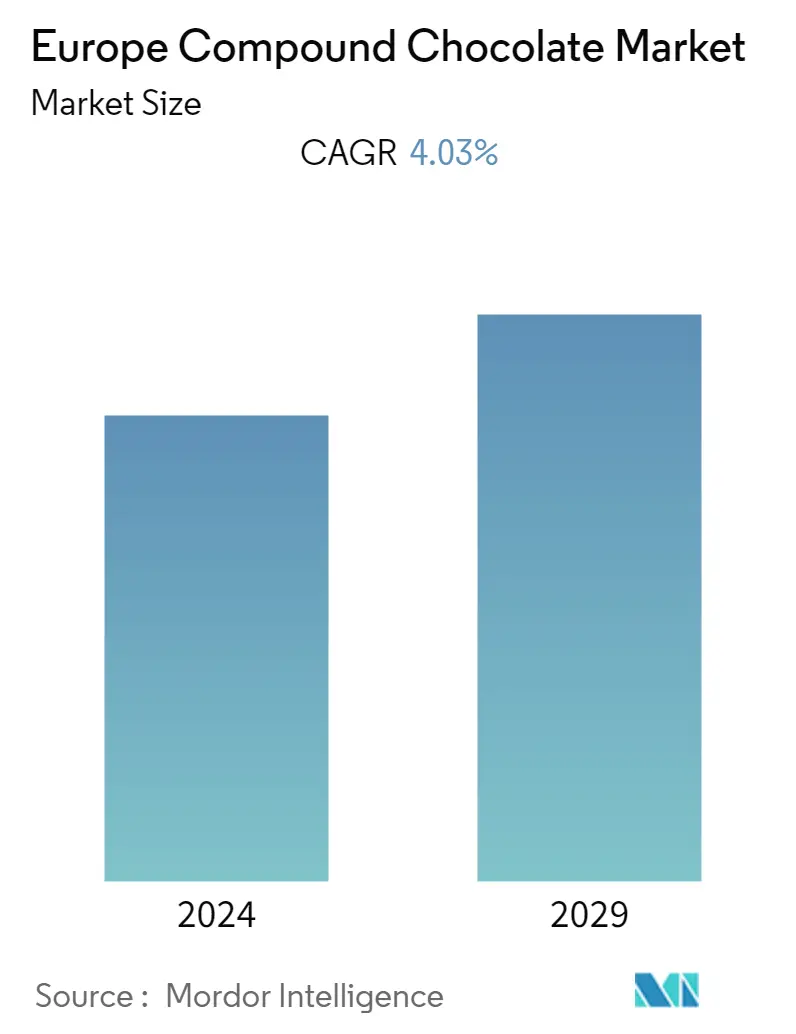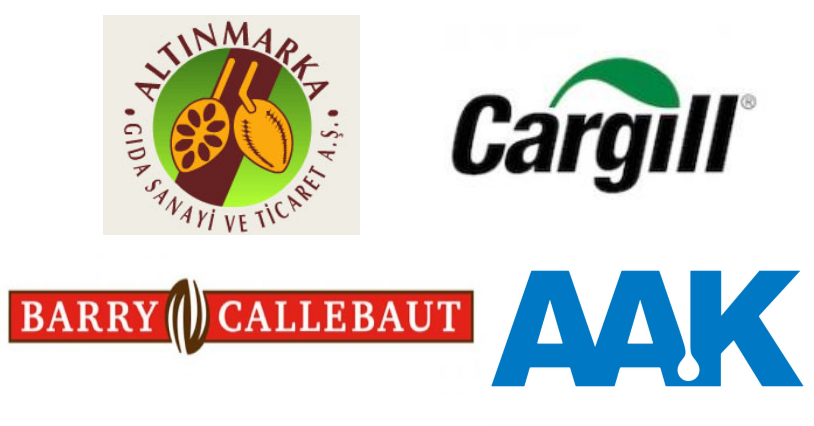Market Size of Europe Compound Chocolate Industry

| Study Period | 2019 - 2029 |
| Base Year For Estimation | 2023 |
| Forecast Data Period | 2024 - 2029 |
| Historical Data Period | 2019 - 2022 |
| CAGR | 4.03 % |
| Market Concentration | High |
Major Players
*Disclaimer: Major Players sorted in no particular order |
Europe Compound Chocolate Market Analysis
The compound chocolate market in Europe is forecasted to reach USD 1.69 billion by 2025, registering a CAGR of 4.03% during the forecast period of 2020 -2025.
- A primary factor driving the market for compound chocolates is their functionality at a lower price. It implies that the demand for compound chocolate is increasing, as compound chocolate replicates the coverture or real chocolate at a lower price.
- The functionalities are driving the growth of the market in the developing regions of Eastern Europe, whereas, the strict regulations in the European Union are hindering the growth of the market.
- Russia and France are expected to retain their dominant position in the European market during the forecast period.
Europe Compound Chocolate Industry Segmentation
Compound chocolates, as defined by FDA, are cocoa products containing cocoa butter substitute (CBS) or cocoa butter equivalent (CBE). The vegetable fats commonly used are often hard fats or fats semi-solids at room temperature, such as coconut oil and palm kernel oil. The scope of the market includes Europe compound chocolate market, segmented by flavor includes dark, milk, white and other flavor. By form, it is segmented as chocolate chips/drops/chunks, chocolate slab, chocolate coatings and other products and by application, the market is segmented as compound chocolates, bakery, confectionery, ice cream and frozen desserts, beverages, cereals, and others.
| By Type | |
| Dark | |
| Milk/White |
| By Form | |
| Chocolate Chips/Drops/Chunks | |
| Chocolate Slab | |
| Chocolate Coatings | |
| Other Forms |
| Application | |
| Bakery | |
| Confectionery | |
| Ice Cream and Frozen Desserts | |
| Beverages | |
| Cereals | |
| Other Applications |
| Geography | |||||||||
|
Europe Compound Chocolate Market Size Summary
The compound chocolate market in Europe is experiencing a steady growth trajectory, driven primarily by its cost-effective functionality compared to traditional chocolate. This market expansion is particularly notable in Eastern Europe, where the demand for compound chocolate is on the rise due to its ability to mimic the qualities of couverture chocolate at a lower price point. However, the growth is somewhat tempered by stringent regulations within the European Union. Despite these challenges, countries like Russia and France continue to maintain a stronghold in the market, leveraging the increasing popularity of dark compound chocolate. This variant, known for its high cocoa content, is favored in the bakery and confectionery sectors, appealing especially to millennials who seek convenient and healthier options.
The European compound chocolate market is characterized by intense competition, with both regional and international players vying for market share. Key global companies such as Barry Callebaut, Cargill, and AAK dominate the landscape, while regional entities like Flanders Filings & Compounds and Sephra LP also play significant roles. The market's prominence in the global arena is underscored by its dynamic nature, with ongoing product development and strategic marketing efforts aimed at boosting production and sales. The bakery sector, in particular, is a major driver of innovation and responsiveness to consumer trends, contributing to the overall growth of compound chocolate sales in the region.
Europe Compound Chocolate Market Size - Table of Contents
-
1. MARKET DYNAMICS
-
1.1 Market Drivers
-
1.2 Market Restraints
-
1.3 Porters Five Forces Analysis
-
1.3.1 Threat of New Entrants
-
1.3.2 Bargaining Power of Buyers/Consumers
-
1.3.3 Bargaining Power of Suppliers
-
1.3.4 Threat of Substitute Products
-
1.3.5 Intensity of Competitive Rivalry
-
-
-
2. MARKET SEGMENTATION
-
2.1 By Type
-
2.1.1 Dark
-
2.1.2 Milk/White
-
-
2.2 By Form
-
2.2.1 Chocolate Chips/Drops/Chunks
-
2.2.2 Chocolate Slab
-
2.2.3 Chocolate Coatings
-
2.2.4 Other Forms
-
-
2.3 Application
-
2.3.1 Bakery
-
2.3.2 Confectionery
-
2.3.3 Ice Cream and Frozen Desserts
-
2.3.4 Beverages
-
2.3.5 Cereals
-
2.3.6 Other Applications
-
-
2.4 Geography
-
2.4.1 Europe
-
2.4.1.1 Germany
-
2.4.1.2 United Kingdom
-
2.4.1.3 France
-
2.4.1.4 Russia
-
2.4.1.5 Italy
-
2.4.1.6 Spain
-
2.4.1.7 Rest of Europe
-
-
-
Europe Compound Chocolate Market Size FAQs
What is the current Europe Compound Chocolate Market size?
The Europe Compound Chocolate Market is projected to register a CAGR of 4.03% during the forecast period (2024-2029)
Who are the key players in Europe Compound Chocolate Market?
Barry Callebaut, Cargill, Incorporated., AAK, Fuji Oil Europe and Clasen Quality Chocolate are the major companies operating in the Europe Compound Chocolate Market.

